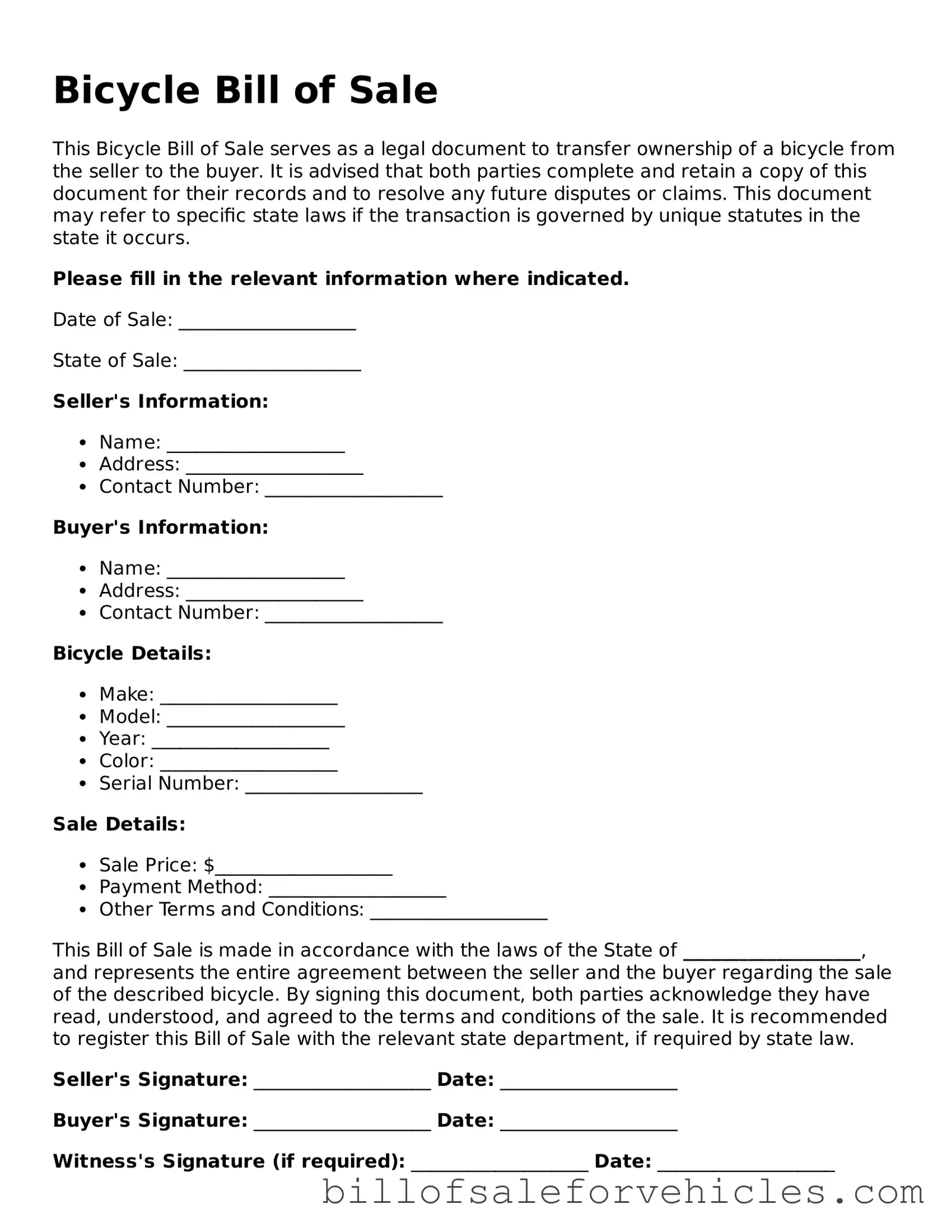What is a Bicycle Bill of Sale?
A Bicycle Bill of Sale serves as a formal document that records the transaction details between a seller and a buyer for the sale of a bicycle. It includes critical information such as the make, model, and serial number of the bicycle, along with the sale price and the date of the transaction. This document offers both parties legal proof of ownership transfer.
Why do I need a Bicycle Bill of Sale?
Having a Bicycle Bill of Sale is crucial because it provides evidence of the transaction and establishes the buyer's legal ownership of the bicycle. It can be particularly valuable in resolving disputes, registering the bike with local authorities, or if the bicycle is ever stolen and subsequently recovered. It essentially protects both the seller and the buyer in the transaction.
What information should be included in a Bicycle Bill of Sale?
The document should include the names and addresses of both the seller and the buyer, a detailed description of the bicycle (including make, model, color, and serial number), the sale price, payment method, and the sale date. Additionally, it can also contain warranties or conditions of the sale and should be signed by both parties to validate the agreement.
Is a witness signature required on a Bicycle Bill of Sale?
While not always legally required, having a witness sign the Bicycle Bill of Sale can add an additional layer of security and credibility to the document. In the event of a legal dispute, a witness can provide an impartial account of the agreement. Laws regarding witness requirements may vary by location, so it's advisable to check local regulations.
Does a Bicycle Bill of Sale need to be notarized?
In most cases, notarization is not mandatory for a Bicycle Bill of Sale to be considered valid. However, getting the document notarized can further authenticate it by verifying the identity of the signing parties. It’s a good step for those who want additional verification and protection, especially in transactions involving high-value bicycles.
Can I create a Bicycle Bill of Sale myself?
Yes, one can create a Bicycle Bill of Sale by themselves. There are many templates available online that can be used as a starting point. Ensure that the document includes all necessary information and meets any specific requirements your state or local government may have regarding personal property sales.
What happens if I lose my Bicycle Bill of Sale?
If the original Bicycle Bill of Sale is lost, try to contact the other party to see if they have a copy. If a copy is also unavailable, drafting a new document that both parties sign can serve as a replacement. This highlights the importance of keeping digital or physical copies of important documents like this in a safe place.
Is a Bicycle Bill of Sale legally binding?
Yes, a Bicycle Bill of Sale is legally binding once it is signed by both the seller and the buyer. This document solidifies the terms of the agreement and the transfer of ownership, legally obligating the parties to adhere to the conditions specified within it. However, it is only valid if it contains accurate information and meets local and state requirements.
